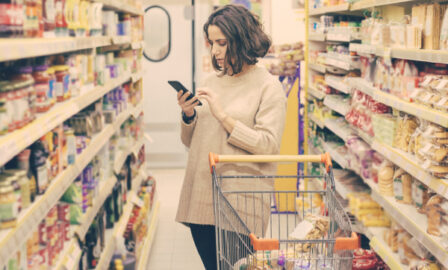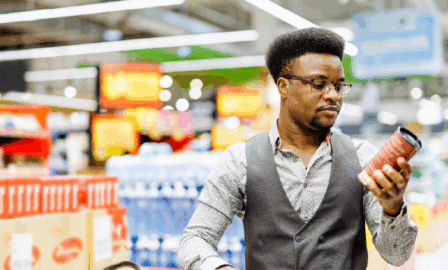Food and Beverage Trends for the 2022 Holiday Season
As the holiday season approaches, there are many trends occurring both new and old in the food and beverage industry. The winter holidays are best known for heartwarming gatherings and a celebration of the past year with plenty of delicious food and drinks. However, recent macroeconomic changes, such as inflationary pressures and product shortages, continue to present challenges in the food and beverage sector. As the holiday season continues, companies will need to be aware of the major trends occurring to develop efficient strategies to handle the changing economic landscape and meet consumer demand.
Macro Food/Beverage Holiday Trends
Inflation
A common theme of this past year has been skyrocketing inflation, which has adversely affected the prices of every commodity. Products such as gas, cars, luxury goods, and more have seen an increase in overall cost. This inflation has specifically occurred extensively in the food and beverage industry, and higher prices are forcing consumers to think cleverly about their shopping choices. Over the past year, more than 50% of consumers have noted that their spending habits have changed at grocery stores due to harsh price increases. This group correlates to the holiday season as well, as over 33% of consumers say inflation will affect their spending selection.
Supply Chain Shortages
In addition to crippling inflation, supply chain issues have put a strain on many consumers and businesses as well. Common foods bought for the holidays are in short supply. Some of these include wheat, butter, eggs, lettuce, and turkey. These items are commonly used in staple holiday meals and will undoubtedly lead to consumers and businesses having to change their spending and selling patterns.
People Finally Gathering for the Holidays
Another common trend this holiday season is people finally gathering for the holidays, as COVID-19 restrictions have continued to ease. For some, this could be the first time seeing family in years. This trend is especially noteworthy in Gen Z and millennial individuals. The average number of people in holiday gatherings is 7.4, but amongst Gen Z and millennials, this number goes up to 9.8. In addition to this, 76% of people said they intend to celebrate the holidays as how life was before the pandemic, signifying most people are enjoying the “return to normal.”
Food and Beverage Trends
In the food space, consumers are responding to the overarching macro trends in a variety of ways. The biggest change is the timing of when they are buying their food. With higher prices and concerns about grocery retailers not having products in stock, consumers are shopping in advance. Excess of two weeks before Thanksgiving, 41% of consumers had already started shopping and 34% had already purchased a turkey. We expect the early purchasing trend will continue into the rest of the holiday season.
In addition to shopping earlier, consumers will also be looking for more deals. Consumers will be on the hunt for coupons and sales, shopping at stores that are known to provide discounts such as Walmart. Barring higher prices and shortages, there is compelling evidence that staple meals of the holiday season such as turkey, ham, and foods used in holiday beverages will still be bought. Around 85% of hosts said they planned turkey for their Thanksgiving meal. While inflation and supply chain issues cause consumers to shop earlier and look for more deals, common foods will still be in high demand.
The beverage industry is eliciting just as strong reactions from consumers and companies as the food industry. Common with the holiday season is the celebration of the previous year, and for some Americans, this is accompanied by the consumption of alcohol. In 2021, the consumption of alcohol during the holiday season increased around 33%, and this number could jump even higher in 2022 as more people gather after COVID.
Consumers are also buying diverse types of alcohol and experimenting with new products. There has been a 29% increase in premixed cocktails, 6% increase in craft beers, and 35% increase in healthier wines. In addition to this, consumers are starting to be more health conscious, as they try less sugar and non-alcoholic options. There has also been a resurgence of unique flavors of teas rich in antioxidants as a healthier option. For some consumers, even with the holiday celebrations ahead, they’ll still be mindful of health in their purchasing decision.
Responding to Evolving Consumer Preferences
As changes in consumer spending habits evolve, especially in food and beverage shopping, companies must respond in new and inventive ways. A prominent trend seen are consumers searching for deals weeks or even months in advance. Stores will need to adapt their supply chains to stock shelves earlier or risk losing shoppers.
Another important consideration is ensuring affordable options are available to consumers in advance to help spur sales. Using available inventory data to shift excess products, companies can create promotions and deals for consumers. Creating gift packs that combine premium items and products with excess supply is an effective way to move slower inventory. This also creates value for the customer, which is essential, as price is still weighing heavily on purchasing decisions.
Further, as COVID-19 concerns continue to fade, stores need to emphasize the advantages of their physical locations as consumers return to in-person shopping. Nearly 70% of consumers said having an in-store collection space, instead of relying on deliveries, would influence their choice of store. With the increase in holiday foot traffic, establishing ease and convenience throughout the shopping experience is a must. For instance, having product displays, with complimentary ingredients, that are accessible and close to centerpiece items (i.e., turkey, ham, etc.) improves the shopping experience. Also, store endcaps are high visibility and highly trafficked locations for key holiday ingredients like flour, sugar, and pumpkin. This creates a much more efficient shopping trip, but stores must maintain supply to avoid out of stocks and loss of sales. Among vendors, end caps are highly desirable as they ensure traffic and visibility. This creates another opportunity for businesses to prominently display profitable items.
Even though shoppers are increasing their physical retail visits during the holiday season, omnichannel options are still heavily utilized. This is especially evident as holidays approach and schedules become more hectic. Since time is critical, omnichannel options like curbside pickup and at-home delivery help consumers improve their productivity. Given changing trends and variability as holidays approach, it’s important for stores to have digital and in-person experiences ready for holiday shopping. This will attract high-value and on-the-go consumers and allow flexibility so shoppers can buy either way.
Another, sometimes underestimated, factor in increased holiday spending is nostalgia – the passed-down family recipes and traditions that bring consumers back every year for the same purchases. These items also tend to have a more inelastic demand curve, and as families plan to revive traditions, there’s an opportunity to capitalize. However, even with nostalgia driving some purchases, businesses must consider current macro trends and adapt with consumers to guarantee a successful holiday shopping season for all.
Preparing for the 2022 Holiday Season
The rapidly approaching holiday season has emphasized macroeconomic trends seen throughout the past year. As a result, many consumers are changing their spending habits and budget allocations. Companies will need to make sure they are responding to these habits effectively to prevent losses. While inflation and supply chain issues may seem weary, there are plenty of opportunities present for stores to remain profitable and successful as the year comes to a close.
Subscribe to Clarkston's Insights
Contributions from Addie Schmidt and Vishnu Avva



